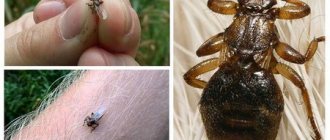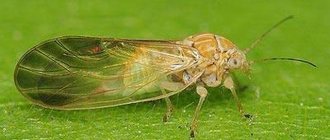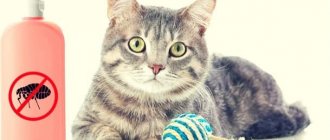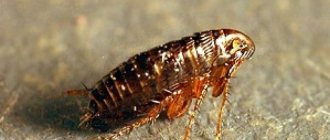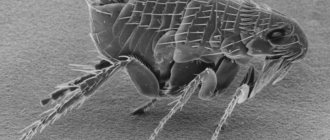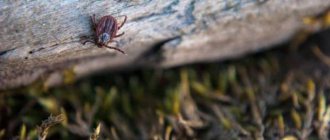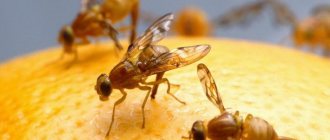Holidays on the beach on Hainan Island are a dream for many tourists, but there are small insects that can turn a holiday on one of the best beaches on this island into a living hell. We are talking about sand fleas, which tourists simply call “midges.” Sand flies in Hainan can be found not only in the Sanya area, but also in other places. In general, the problem of sand fleas is common throughout Southeast Asia, so reports of someone being badly bitten by midges appear not only in Hainan, but also in Nha Trang, Boracay and other places in the region. Note that not every person is allergic to midge bites on the beaches of Hainan Island. For some, sand flea bites can cause acne that itch terribly, while others may not notice the bites of these fleas at all. People who have already experienced midge bites in Hainan know that they can be quite painful. If left untreated, they can cause a lot of suffering for days or even weeks before going away on their own. Although sand flea bites in the Sanya area are generally not dangerous, sand flies can carry diseases and transmit viruses. So sometimes, in the case of multiple midge bites, it is worth consulting a doctor, especially if you experience serious symptoms after the bites. Although midges on Hainan beaches are very small, they can cause serious skin problems. They tend to bite your feet because they are closest to the ground, and sand fleas can only jump 20-40 cm. However, if you decide to lie down on the sand, then there is a chance that midges will bite you everywhere. The same thing can happen if you lie on a sun lounger. It is important to note that midges in Hainan most often bite in the evening, at night or at dawn. It is at this time of day that sand fleas are most active. So when walking along the beach in the evening in shorts or a skirt, you should be prepared for the fact that you will be bitten. During the period from late morning to the pre-sunset hours, midges on the beaches of Hainan are not so active, but this does not mean that they do not bite at all during this time.
How sand fleas bite
There are two types of sand flea bites. The first one looks like a mosquito bite. That is, the flea jumps on a person and sucks blood, after which it goes in search of another victim. These sand flies inject saliva as they feed to prevent blood clotting, and it is this saliva that causes skin irritation and can cause allergic reactions. The second type of bite is a little worse, as it is part of the sand flea's breeding process. With such a bite, the flea lays eggs under the skin. If you see swollen areas on the skin with black spots in the center, you can be sure that this is where the sand flea laid eggs. In any case, both types of bite will cause symptoms such as itching, pain and discomfort.
How to recognize an insect bite
A tourist who is bitten by a sand flea may not suspect anything for at least several more hours. The maximum incubation period reaches 12 days.
The moment of the bite itself is not felt in any way, and the size of the insect, as mentioned above, does not exceed a few millimeters, so it is difficult to notice the flea. They live on dry and wet sandy beaches. It doesn’t matter whether the place is deserted or crowded - insects will always find a victim.
How to recognize a sand flea bite?
- The skin begins to itch.
- Most often the extremities itch – legs, especially feet, and arms. Damage to the body - neck, back, abdomen, groin - is possible. The genitals, lips, and back of the head may be affected.
- Over time, the itching becomes more intense, and bite marks become obvious. They are larger in size than mosquitoes, and the affected area swells up like a lump. A clear point is clearly visible in the center - the body of the insect.
- If the degree of attack is low, then there are no more than 5 lesions, and with the maximum form - over 30.
- Severe forms of infestation are more common among people of retirement age.
Those who are not particularly knowledgeable can easily confuse a flea bite with the way a bug bites. But the difference is that after the bite of the latter there are no cones left, and they mainly affect the legs.
It is important not to touch the itchy areas. Otherwise, the area of irritation will increase, and liquid will begin to ooze from the bite sites. The most unfortunate way is to give up on the problem without making any attempts to cure it. You cannot think that the reaction to a bite will go away in a few days. The tricky thing is that the longer the insect is under the skin, the stronger the inflammatory process.
Under no circumstances should you self-medicate or remove the body using improvised means. The flea is located next to the blood vessels, and if it is accidentally crushed by clumsily pulling it out, complications cannot be avoided. The female can only be removed surgically. The surgeon removes the insect with tweezers or sterile needles, treats the wound and bandages the operated area. If help is provided on time, the outcome is favorable.
So the best thing to do on vacation is to go to the hospital with health insurance.
It's good to know the enemy by sight. It’s even better to distinguish between its other varieties. In Thailand, other insects can be mistaken for sand fleas. True, their bites are not so dangerous.
- Mosquitoes and midges. Their bites are very similar to flea bites, but are essentially harmless.
- Ants. They can take revenge on a person if he accidentally crushes them with his hand or body. They usually crawl on people by accident. An ant bite leaves a lump that may hurt for some time.
- Bedbugs. They are extremely rare. Mostly in bungalows and not very well maintained hotels. After bedbugs, a “path” of bites remains, but the affected areas never swell.
We suggest you read: Does a mole have eyes or not?
What to do if you are bitten by midges in Hainan
If you were bitten by sand flies on one of the beaches near the city of Sanya, we advise you to immediately begin treatment. First of all, never scratch the bite site, as this increases the chances of infection getting into the wound. Check the bite site for eggs, as sand flies can live under the skin and suck blood for several weeks. How to protect yourself from sandfly bites in Hainan? Many locals advise first rinsing the bites with cold water mixed with baking soda, then immediately applying calamine lotion or hydrocortisone cream to ease the pain and reduce swelling. All these products can be bought at any pharmacy in Sanya. You just need to show the bite spots on your body, and the pharmacist will offer you the right remedy. Aloe Vera and essential oils of lavender, eucalyptus, tea tree and cedarwood are also good for numbing pain.
Preparations for the treatment of sand flea bites
Some of the obvious symptoms indicating a bite are tumors and unbearable scabies. Before applying medicinal products, the wound must be disinfected. Hydrogen peroxide is suitable for these purposes. After this procedure, you can use medications to help get rid of discomfort. They come in three forms:
- cream;
- repellent spray;
- pills.
We suggest you read: HTTP status 402 – payment required, payment required
Each remedy is effective at different stages, depending on the scale of the disaster and the size of the bite.
The most popular antihistamine creams are:
- yellow balm;
- Phenergan cream;
- Fenistil;
- Compound Dexamethasone Acetate Cream.
They perfectly relieve itching and pain, after which the desire to scratch the body disappears, in addition, they are suitable for children. To eliminate scabies and inflammation, you can also use hormonal agents based on hydrocortisone or sulfur ointment. Preparations containing Aloe Vera will have a calming effect.
Of the repellent sprays, Mentholatum Remos is the most effective.
Its action lasts up to 6 hours. In addition, it is suitable for children aged 4 years and older. You can also use Calamine lotion. This antiseptic speeds up the healing process.
Tablets are divided into antihistamines and antibiotics. Among antihistamines, cetirizine hydrochloride 10 mg (Cetirizine Hydrochloride) is effective. Suprastin and Zyrtec have less effect. These medications reduce scabies, but are contraindicated in children under 7 years of age.
Antibiotics reduce the affected area and itching, but act more slowly than creams. For example, when taking Hapenxin XX 500mg in capsules, changes become noticeable only after 5-7 days, and complete recovery occurs after 7-8 weeks. As a rule, both types of tablets are used in combination. The downside is that medications can cause drowsiness.
In addition to medications, there are effective folk remedies that can eliminate itching after a bite. Their essence boils down to the effect of high temperatures on the affected area.
- If you direct a hot stream from a hairdryer to the bite site, you may feel relief. True, you need to blow carefully. Otherwise, you may get burned.
- Instead of a hairdryer, you can use hot cutlery - knives, spoons or forks. The device is placed in boiling water for a couple of seconds, and then applied to the affected area.
- Another alternative is a hot shower. You need to turn up the temperature, which is almost unbearable to endure. Of course, the skin will turn red, but after it is dried and moisturized with cream, the itching will go away.
What to do to avoid being bitten by midges in Hainan
You will be 100% protected from midge bites in Hainan only if you walk along the beach in a wetsuit, high rubber boots or some other clothing that completely covers your skin.
But you're unlikely to be interested in spending time at the beach in anything other than your bathing suit. So you have to accept that sand flea attacks are still possible. However, if you follow some tips, you can significantly reduce the likelihood of midge bites on the beach in Hainan. First of all, don't go to the beach when it's raining. Sand fleas are very aggressive when the air is cool and humid. For the same reason, we advise you to stay away from the beach in the early morning, evening and night. Secondly, use insect repellent if you feel that midges are attacking. Third, try to cover yourself when sitting or lying down to avoid bites on your body. Similar articles
Ways to get rid of sand fleas
There are quite a few means to get rid of sand parasites, and it is important to remember that an insect can develop immunity to the same method (except in cold temperatures), so it is important to try to diversify each procedure.
Chemical means for control
Among the chemicals, the following are considered the most popular and effective:
- Tick Carpet Spray - will help get rid of parasites on fleecy surfaces (carpets, curtains, etc.). After using the product, you must thoroughly vacuum the surfaces and wet clean the house.
Tick Carpet Spray - TRoom Fogger - used to destroy larvae. The product can be used in both non-residential and residential buildings. The treated room is closed for 2 hours, then allowed to ventilate for about 20 minutes. Wet cleaning is also required.
TRoom Fogger flea spray
A person can protect himself from fleas with the help of various sprays and repellents used against ticks, mosquitoes, etc.
Traditional methods
Traditional methods are considered not very effective in fighting insects, but for prevention or as an addition to chemical agents they are used quite often:
- Hanging wormwood in all corners of the house or room where parasites live.
- Provide frequent ventilation, as the insect cannot tolerate low temperatures.
- Also take fabric items and bedding out into the cold and keep them there for several hours. Afterwards treat with a mixture made from salt and soda, then vacuum everything thoroughly.
- It is better to wash the room with a solution made from tansy and nettle.
- Place pine shavings in inaccessible places.
Sand fly or sand flea?
Do not confuse the sand fly with the sand flea. The latter is not found in Thailand. The sand flea is similar to the common flea that a left-hander shod. She moves by jumping and has no wings. Habitats: India, Africa, Central and South America. This insect is even called the Brazilian ground flea. It is dangerous because when a fertilized female bites, it bites under the skin and remains there until the eggs mature. Of course, there are fleas in Thailand, but not the ones called sand flea.
Sand fleas are also called crustaceans of the genus Emerita. Some of their names include sea cicada, mole crab and sand crab. In Thai it's "chak-kachan-tale". In Phuket, such crustaceans are collected, fried directly with the shell and eaten. You can try sea cicadas at Indy Market, Chilwa Market and Thalang Street Sunday Market. Quite a tasty snack.
On the beaches of Thailand, only sand flies can bite. In Thai they are called "rin nam-khem", which translates to "sea midge" or "salt water midge". In Russian, sand flies are called true midges; they belong to the genus Culicoides.
STARFISH: CROWN OF THORNS (EGYPT, TROPICAL PACIFIC AND INDIAN OCEANS)
Stars are mostly harmless, but there is one that is harmful. Her name is acanthaster, or crown of thorns. This star is easily recognized by its large number of rays with spikes at the ends. The body with a diameter of 50 cm is covered with numerous sharp needles up to 3 cm long. At their bases there are poisonous glands, so their injections are very painful and lead to serious poisoning. Needles easily break off in human skin and cause inflammation, swelling, vomiting, and dizziness.
What to do: When you see the crown of thorns, swim to hell. But if you do get injected, the affected area of the body should be placed in hot water (at least 50°C), then clean the wound and lubricate it with an antiseptic. Then consult a doctor.
Photo: Getty Images
Methods for preventing bites
- In endemic regions, wild, dirty and neglected beaches should be avoided.
- Do not lie on the sand, use sun loungers or thick bedding.
- After each visit to the beach, conduct a self-examination, paying special attention to the “favorite” areas of the parasite - feet and fingers.
- Use repellents.
- Wear closed shoes, socks, long pants.
- After a walk, you should thoroughly wash your feet in warm water - this simple measure reduces the risk of the parasite penetrating the skin.
Sand fleas most often attack locals walking barefoot and careless tourists who are unfamiliar with the fauna of the region where they are vacationing. To avoid negative consequences from your vacation, you should check with your guide or tour operator in advance about possible risks. Timely diagnosis and seeking medical help guarantee a quick recovery.
What do sand flies look like?
The insect is very reminiscent of the Russian midge. Such insects appear at the beginning of summer and are called midges. A tiny black body measuring only a couple of millimeters. These midges have only two whitish or transparent wings with black spots. Sometimes you won't even see the sand fly. You can only feel the bite and then see the consequences. Some people don't even notice the bites.
Female sand flies, like mosquitoes, require mammalian blood to reproduce. During a fly bite, saliva containing allergens is injected, which triggers the body's defense reaction. The toxin does not affect everyone the same. Even more: not all people are bitten by sand flies, only the “delicious” ones.
The first symptoms do not always appear immediately. For some, the bites begin to itch after a few hours, for others - after a couple of days. I notice the first redness and blisters in the evening if I was bitten during the day.
Who are they and where do they live?
Sand fleas in Vietnam are insects 1-2 mm in size, with a hard, dark-colored chitinous shell. They move by jumping, like most fleas. They live in the sand near the water (that's why they are sometimes called beach fish), as well as on damp ground. In Vietnam, these fleas can only be found on wild beaches and in the jungle, where tourists are often taken on excursions. Sand fleas are not found on equipped beaches, because special treatment is carried out there, and the sand is also sifted. Sand flea bites in Vietnam mainly occur to animals. These insects have a body and legs equipped with small bristles that help them stay in the fur of animals. However, if such a flea encounters a person, it will happily bite him too.
MALARIA: DEADLY MOSQUITO (THAILAND, AFRICA)
Throughout human history, malaria has claimed far more lives than any other disease. Currently, 350–500 million human cases of infection are recorded annually. The carrier of the infection is the malaria mosquito. By itself it is not contagious. The parasite becomes dangerous only after it has fed on the blood of a malaria patient. Fortunately, the disease is now curable. The main thing is to see a doctor in time. You should be wary if you develop a fever while on vacation in tropical countries after being bitten by an insect.
What to do: The likelihood of infection increases at night. Windows must be equipped with mosquito nets. In the evening, you must wear closed clothing and treat your skin with repellents. Before traveling to some countries, doctors recommend taking special medications.
Photo: Getty Images
